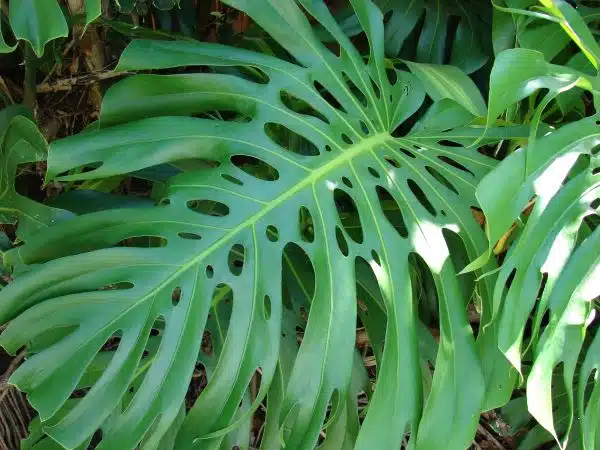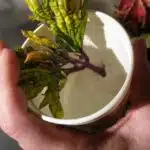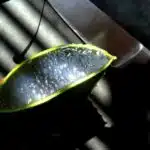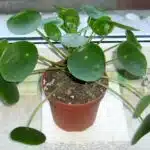Monstera Deliciosa, commonly known as the Swiss Cheese Plant, is a popular houseplant due to its unique foliage and ease of care. However, propagating this plant can be tricky for some gardeners. In this article, we will discuss the five easy steps to propagate Monstera Deliciosa successfully.
Propagation is an essential technique that every gardener should master. By propagating plants, you can expand your collection without spending a dime and also help others grow their own greenery. In this guide, we will explore the different methods of propagating Monstera Deliciosa and provide tips on how to ensure the success of your propagation efforts. So whether you are a seasoned gardener or new to the world of horticulture, read on to learn how to propagate this stunning plant in just five simple steps.
Benefits Of Propagating Monstera Deliciosa
Propagating monstera deliciosa, also known as the Swiss cheese plant, is an easy and cost-effective way to expand your indoor garden. By taking a cutting from a mature plant and encouraging it to root, you can have a brand new plant in no time. Aside from being an affordable way to expand your collection, propagating monstera deliciosa has several benefits that make it worth considering.
One of the main benefits of propagating monstera deliciosa is that it allows you to maintain the health of your existing plants. As plants age, they can become less vigorous and more susceptible to disease. By taking cuttings and growing new plants, you can ensure that you always have healthy, young specimens in your collection. Additionally, by propagating your own plants rather than purchasing them from a nursery or garden center, you can avoid introducing pests or diseases into your indoor garden.
Another benefit of propagating monstera deliciosa is that it gives you greater control over the shape and size of your plants. By selecting cuttings from specific parts of the parent plant and controlling their growing conditions, you can encourage them to grow in particular ways. This allows for greater customization of your indoor garden and ensures that your plants fit perfectly within the space available.
Understanding monstera deliciosa anatomy is crucial for successful propagation. In order to take cuttings that will root successfully, it’s important to know which parts of the plant are best suited for propagation. In the next section, we’ll take a closer look at the anatomy of monstera deliciosa and explore how to select the best cuttings for propagation.
Understanding Monstera Deliciosa Anatomy
Monstera deliciosa, also known as the Swiss cheese plant, is a tropical plant native to regions of Central and South America. Before propagating this plant, it is crucial to understand its anatomy. A Monstera anatomy exploration reveals that the plant has large, heart-shaped leaves with fenestrations or holes that give it its distinctive look.
The propagation process involves taking a cutting from the mother plant and rooting it in water or soil. However, propagating Monstera in different climates can vary slightly due to differences in temperature and humidity levels. In warmer climates, cuttings can be rooted directly in soil, while colder climates may require the use of heat mats or other methods to maintain warm temperatures.
Understanding the anatomy of Monstera deliciosa is essential for successful propagation. By exploring the structure and characteristics of this unique plant, you can better understand how to propagate it successfully in various environments. Next up, we will discuss gathering necessary tools for propagating Monstera deliciosa to ensure a smooth and efficient process.
Gathering Necessary Tools
As we have previously learned, understanding the anatomy of Monstera Deliciosa is crucial before propagating this plant. Now that we have a clear picture of its structure, it is time to gather the necessary tools for propagating. But before we proceed with selecting our tools, it is essential to take safety measures seriously. We must prioritize our safety and make sure that we do not harm ourselves while handling sharp tools.
When it comes to selecting tools, there are several items that you will need to make the propagation process as smooth as possible. Here are some of the essential tools that you should consider having:
- Pruning shears
- A clean cutting board or surface
- A glass jar or vase
- Water
- Rooting hormone (optional)
Pruning shears are necessary for cutting off stems from the mother plant accurately. A clean cutting board ensures that no bacteria from previous use affects your cuttings. Using a glass jar or vase filled with water allows us to observe root growth better and determine when our cuttings are ready for planting in soil.
To ensure our safety, it is crucial to wear gloves while handling pruning shears and other sharp objects. We must also keep any electrical equipment away from water sources to avoid electrocution.
Now that we understand how to select our tools and prioritize safety let’s proceed with Method 1: Propagating in Water, where we can start propagating Monstera Deliciosa cuttings by placing them in water until roots develop.
Method 1: Propagating In Water
Propagating Monstera Deliciosa in water is a simple and effective method that can be done by anyone with a bit of patience. To start, choose a healthy stem cutting with at least one node. Place the cutting in a jar or vase filled with clean water so that the bottom of the stem is submerged. It is important to change the water every few days to prevent bacteria growth and maintain water levels.
Maintaining water levels is crucial for successful propagation. If the water level drops too low, the roots will not be able to continue growing and may die off. On the other hand, if the water level is too high, it can suffocate the roots and cause them to rot. The ideal water level should be just below where the leaves start.
Once roots have grown to at least an inch long, it’s time to transfer the cutting into soil. Choose a well-draining potting mix and plant your cutting about 1-2 inches deep with its roots covered in soil. Water sparingly but regularly to keep soil moist but not saturated. In a few weeks, your new Monstera Deliciosa plant should start showing signs of growth above ground.
Transitioning into Method 2: Propagating in Soil, this alternative method can also yield successful results if done correctly.
Method 2: Propagating In Soil
Soil propagation is another easy way to propagate Monstera Deliciosa. To start, choose a healthy and mature plant with several leaves and aerial roots. Next, prepare a potting mix that comprises of well-draining soil and perlite in a ratio of 1:1. Make sure the pot has drainage holes to prevent waterlogging.
Once you have the plant and the potting mix ready, it’s time to propagate. Gently remove the plant from its container and shake off any excess soil. Then, carefully separate the roots into two or three sections using your fingers or a clean knife. Place each section into a small pot filled with the prepared potting mix and water thoroughly.
When propagating through soil, it’s important to note that Monstera Deliciosa prefers well-draining soil that retains some moisture without becoming waterlogged. Also, avoid placing the pots in direct sunlight as this can damage the young plants. With proper care and attention, your new Monstera Deliciosa plants will grow healthily and thrive in their new environment. In the following section, we’ll discuss another method of propagation known as division-propagation or separation-propagation .
Method 3: Propagating Via Division
After learning how to propagate Monstera Deliciosa using soil, let us now explore another technique – plant division. This method involves separating the parent plant into smaller sections, each with its own roots and stems. Plant division is a preferred method for propagating mature Monstera plants that have outgrown their pots and need repotting.
To begin with, you will need to remove the entire plant from its pot and examine the root system. Look for natural separation points where the plant can be divided into smaller sections without causing damage to the roots. Using a clean and sharp knife, carefully cut through the root ball in a way that ensures each section has enough roots to sustain itself.
Once you have separated the plant into smaller sections, replant them in individual pots filled with fresh soil and water thoroughly. Keep them in a warm and humid environment until they establish their roots and start growing new leaves. With this Monstera propagation technique, you can create multiple plants from a single parent plant, making it an efficient way of expanding your collection.
Now that we have discussed two popular Monstera propagation techniques – propagating in soil and via division – it’s time to choose which one suits your needs best. Consider factors such as available resources, time constraints, desired outcome, and personal preference when deciding which method to use. Whether you choose to propagate using soil or division, remember that patience is key when it comes to growing Monstera Deliciosas. With proper care and attention, your new plants will eventually become thriving members of your indoor jungle!
Choosing The Best Propagation Method For You
Cutting is one of the most popular methods of propagating Monstera deliciosa due to its simplicity and availability of material. Water propagation is another common method that requires sterile water, a container, and the cutting material. Soil propagation requires a well-draining potting mix, a container, and the cutting material. Air layering is a method that requires the cutting material, a container of moist potting soil, and rooting hormone.
Cutting
To propagate Monstera Deliciosa, the most common method is cutting. This propagation technique involves pruning a healthy stem from the plant and rooting it in water or soil until it develops its own root system. Using rooting hormone can help speed up the process of root development.
When choosing which stem to cut, look for one that is at least 6 inches long and has a few leaves attached. It’s best to use pruning techniques such as sterilizing your tools and making a clean cut to avoid damaging the plant. Once you have your cutting, remove any leaves that are close to the bottom of the stem before placing it in water or soil.
It’s important to keep your cutting moist and in indirect sunlight while it roots. After a few weeks, you should start to see new growth indicating that roots have formed. At this point, you can transplant your new Monstera Deliciosa into its own pot with fresh soil. With proper care, your propagated plant will thrive and become a beautiful addition to your home or garden.
Water
When it comes to propagating plants, there are several techniques that can be used. One of the most popular methods is using water. Water propagation involves placing a cutting in a container filled with water until it develops roots. This technique is ideal for beginners and those who want to monitor root growth easily.
When choosing water as your propagation method, it’s important to consider the quality of the water you use. Tap water may contain chlorine and other chemicals that can harm your plant. It’s best to use distilled or filtered water instead. Additionally, make sure your container is clean and free from any contaminants that could negatively affect root growth.
To begin the process, choose a healthy stem with at least one node or joint where leaves emerge. Cut the stem just below the node and remove any leaves that will be submerged in water. Place the cutting in your container filled with water, making sure the node is fully submerged. Change out the water every few days to prevent bacterial growth and promote healthy root development. After a few weeks, you should see roots starting to grow from the node, indicating that your cutting has successfully propagated.
Preparing The Plant For Propagation
To prepare the Monstera Deliciosa for propagation, pruning is a necessary step. Pruning involves removing any dead or yellowing leaves to give the plant more energy for growth. It also helps to shape the plant and prevent overcrowding of leaves. When pruning, it is important to use clean, sharp scissors and make clean cuts close to the main stem.
Another way to prepare the Monstera Deliciosa for propagation is by selecting healthy leaves for propagation. Choose leaves that are mature and have no signs of damage or disease. It is also important to select leaves with at least one node as this will be where new roots will form when propagated.
Once you have selected healthy leaves, you can begin propagating Monstera Deliciosa leaves. This involves making a small cut on the leaf stem just below the node and inserting it into water or soil for rooting. Water propagation involves placing the leaf cutting in a jar of water with its node submerged, while soil propagation requires planting it in moist soil with good drainage. With proper care and attention, your Monstera Deliciosa leaf cutting should develop roots within a few weeks and begin growing into a new plant.
With your Monstera Deliciosa pruned and healthy leaves selected, you are ready to take cuttings from the parent plant. This next step involves carefully selecting stems with two or three nodes and cutting them just below the lowest node. By using these cuttings, you can propagate multiple new plants from one parent plant. In the following section, we will discuss how to take these cuttings and propagate them successfully.
Taking Cuttings From The Parent Plant
Once the plant has been prepared for propagation, it is time to take cuttings from the parent plant. Monstera deliciosa can be propagated in different ways, but stem cuttings are the most common method. It is important to choose a healthy parent plant with strong stems and leaves to ensure successful propagation.
Timing of propagation is also crucial in propagating Monstera deliciosa. The best time to take cuttings is during spring or summer when the plant is actively growing. Cuttings taken during this time have a higher chance of rooting and developing into healthy plants. Avoid taking cuttings during winter or fall as these seasons are not ideal for growth and development.
Rooting the cuttings is the next step after taking them from the parent plant. This involves placing the stem cutting in water or soil, ensuring that it receives adequate light and moisture for successful rooting. With proper care and attention, the cutting will produce roots within a few weeks, signifying successful propagation.
Rooting The Cuttings
After selecting healthy stems from your Monstera Deliciosa, it’s time to plant them in a potting mix. The ideal mix should be well-draining and aerated with good water retention properties. Make sure that you choose a container that is slightly larger than the stem and has drainage holes at the bottom to avoid waterlogging.
Once you have prepared the potting mix and container, it’s time to plant the stem cutting. Dip about 1-2 inches of the base of the stem in rooting hormone powder before planting it into the soil mixture. Firmly press the soil around it to ensure that no air pockets remain near the stem. After planting, give it a good watering, but make sure not to overwater as this can lead to root rot.
While waiting for new growth, there are some important plant care tips that you should consider. Firstly, keep your propagated Monstera Deliciosa in a bright spot away from direct sunlight as this can cause leaf burn. Secondly, maintain moderate humidity levels by misting or placing a humidifier nearby. Thirdly, keep an eye out for pests such as mealybugs or spider mites which can easily infest these plants.
Markdown list:
- Select a well-draining potting mix
- Choose a container with drainage holes
- Dip base of stem in rooting hormone powder
- Keep plant in bright spot away from direct sunlight
With proper care and patience, your newly propagated Monstera Deliciosa will start to grow roots and leaves within a few weeks. Remember to adjust its location periodically based on its growth patterns so that it receives adequate light and space as it matures into a full-grown plant. In our next section, we will cover essential gardening tips for caring for your new propagated Monstera Deliciosa plant without causing harm or damage during its growth process.
Caring For The New Propagated Plant
After successfully propagating your Monstera Deliciosa, it is important to take good care of the new plant. By doing so, you can ensure its survival and maintain its health in the long run. New plant care involves several factors such as watering, fertilizing, and providing adequate lighting conditions.
Watering is an essential aspect of new plant care. It is recommended to water your Monstera Deliciosa once a week or when the top inch of soil feels dry to the touch. Over-watering can lead to root rot, which can be detrimental to the health of your new plant. On the other hand, under-watering can cause the leaves to wilt and turn yellow.
Fertilizing your propagated Monstera Deliciosa is also crucial for its growth and development. Use a balanced fertilizer that contains equal amounts of nitrogen, phosphorous, and potassium. Apply it every two weeks during spring and summer months when the plant is actively growing. However, avoid fertilizing during winter months when growth slows down.
Table: New Plant Care Guidelines
| Factors | Guidelines |
|---|---|
| Watering | Water once a week or when top inch of soil is dry |
| Fertilization | Use balanced fertilizer with equal amounts of NPK |
| Lighting | Provide bright but indirect sunlight for 4-6 hours daily |
Propagation benefits not only give you more plants but also allow you to create healthier specimens by removing diseased or damaged portions from existing plants. By following these guidelines for new plant care, you can ensure that your propagated Monstera Deliciosa will thrive in its new environment. Remember to provide adequate light exposure without direct sunlight and avoid overwatering as well as fertilizing during winter months.
Transition: To further ensure optimal growth conditions for your propagated Monstera Deliciosa, it’s important to be aware of common mistakes that can hinder its growth.
Common Mistakes To Avoid
Propagation of Monstera Deliciosa can be a rewarding experience for any plant enthusiast. However, it is important to avoid common mistakes that can hinder the growth and development of your new plants. One mistake to avoid is using low-quality soil or not providing sufficient nutrients during the propagation process. This can stunt the growth of your new plants and lead to weak root systems.
Another common error in Monstera Deliciosa propagation is overwatering. While it may seem like a good idea to water frequently, excessive moisture can lead to root rot and other fungal diseases. It’s essential to monitor soil moisture levels carefully and only water when necessary.
A third mistake to avoid is not providing adequate light for your new plants. Monstera Deliciosa requires bright, indirect sunlight for optimal growth and development. Failing to provide enough light can result in stunted or discolored leaves, which will ultimately affect the overall health of your plant.
To ensure successful propagation of Monstera Deliciosa, it is crucial to avoid these common mistakes. By providing quality soil, proper watering techniques, and adequate lighting, you’ll create an ideal environment for healthy plant growth. In the next section, we’ll explore some troubleshooting techniques that can help you overcome any issues that arise during the propagation process.
Troubleshooting Propagation Issues
Troubleshooting propagation issues is an important aspect of plant care that all horticulturists should be well-equipped with. While propagating Monstera deliciosa can be a rewarding experience, it can also come with its fair share of challenges. Common mistakes to avoid include overwatering, underwatering, and using the wrong soil type.
Overwatering is one of the most common mistakes that people make when propagating Monstera deliciosa. It is vital to note that this plant does not tolerate waterlogged soil, as it can lead to root rot and stunted growth. Therefore, it is essential to allow the soil to dry out completely before watering again. On the other hand, underwatering can cause wilting and yellowing of leaves.
Using the wrong type of soil can also hinder successful propagation. Monstera deliciosa prefers well-draining soil that is rich in nutrients. Using heavy soils or those with poor drainage capabilities may suffocate the roots or cause waterlogging, leading to poor growth or even death of the plantlet. By avoiding these common mistakes and following proper propagation techniques, you are on your way to a thriving Monstera deliciosa!
Transition: While troubleshooting propagation issues can be challenging at times, there are still many success stories worth sharing! In the next section, we will explore some inspiring stories of individuals who propagated their Monstera deliciosa plants successfully – proving that anyone can achieve great results with proper care and attention.
Propagation Success Stories
Amidst the propagation techniques available, propagating Monstera Deliciosa is effortless. With just a few steps, you can have a new plant for your garden or to gift to someone. However, propagation challenges exist, and it’s essential to understand them before starting.
One common challenge in propagating Monstera Deliciosa is rooting failure. When using stem cuttings, ensure that the cutting has a node since this is where the roots emerge. The cutting should also be at least three nodes long. Additionally, ensure that the soil remains moist but not overly wet during the rooting process.
Another challenge is maintaining humidity levels during the propagation process. To overcome this challenge, place a clear plastic bag over the propagated stem and container. The bag will trap moisture and create an ideal environment for root development.
Propagation success stories are excellent motivators for anyone seeking to propagate Monstera Deliciosa plants successfully. By understanding propagation challenges and following propagation techniques correctly, anyone can enjoy their new Monstera Deliciosa plants in no time!
Conclusion: Enjoy Your New Monstera Deliciosa!
Celebrating new growth is always an exciting moment for any plant enthusiast. After successfully propagating your Monstera Deliciosa, it is time to sit back and admire the fruits of your labor. Take a moment to appreciate the new leaves that signify new life. This can be a great opportunity to reflect on the journey you have had with your plant, from nurturing it as a cutting to watching it grow into a mature plant.
As you celebrate this milestone, consider sharing your propagation tips with friends who may also be interested in growing their own Monstera Deliciosa. A simple conversation about your experience can spark curiosity and inspire others to try propagating their own plants. Encourage them to research propagation techniques and provide them with resources that will help them succeed in their journey.
In conclusion, propagating Monstera Deliciosa can be a fulfilling experience for any plant lover. With just five easy steps, you can create new growth and share your success with others. Celebrate each stage of the process and take pride in watching your new plant flourish. Remember to share your knowledge with others so that they too can enjoy the beauty of this stunning tropical plant species!
Conclusion
Propagation of Monstera Deliciosa is an essential skill for horticulturists, hobbyists, and plant enthusiasts. This article has provided a detailed guide on how to propagate Monstera Deliciosa in five easy steps. The benefits of propagating this plant are numerous, including having more plants to enjoy or share with friends and family.
Understanding the anatomy of Monstera Deliciosa is crucial for successful propagation. Gathering the necessary tools such as pruning shears, water, soil, among others, is also vital. The propagation methods discussed in this article include propagating in water and soil. Common mistakes to avoid and troubleshooting propagation issues have also been highlighted.
The allegory of propagating Monstera Deliciosa can be compared to planting seeds of hope for a better tomorrow. Propagation allows one plant to grow into many, creating a beautiful garden that will thrive for years to come. It requires patience and attention to detail but ultimately leads to success stories worth sharing.
In conclusion, I recommend that you take advantage of the information provided in this article and propagate your Monstera Deliciosa using the outlined steps. Remember that every successful journey begins with a single step; start your propagation journey today and watch as your garden flourishes with new plants!
Image Credits
- “Starr 080731-9572 Monstera deliciosa” by Forest & Kim Starr (featured)





























